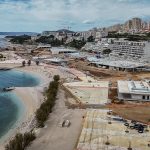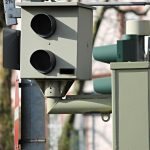As Glas Istre/Duska Palibrk writes on the 8th of November, 2019, Rovinj is leading the way in investments in public infrastructure. Out of a total of about 10 million euros invested during the first half of this year, 4.6 million euros has been invested in paving the plateau at St. Euphemia and the Dapiran roundabout – Istarska street. In addition, the most important investments made in infrastructure include the reconstruction of Valpereri Street and the construction of the northern breakwater of Katarin in Rovinj.
This year and next year, about 120 million euros has been or will be invested in public tourism and other infrastructure across Istria. Most of this money comes from both city and municipal budgets, as well as from co-financing from the Ministry of Tourism and also from various European Union funds.
According to the data collected from the local self-government units by the County Administrative Department for Tourism, the record holder for investments is the city of Rovinj, Croatia’s tourism champion. Of the almost 36.2 million euros of investments made during the first six months of this year, more than 32 million euros relates to Rovinj, which used this money to renovate new promenades and hiking trails.
The next most significant realised projects related to the tourist infrastructure are the arrangement of the Vižula Archaeological Park in Medulin, roads with parking in Labinci, car parks in Rabac and a visitors centre in Barban.
Rovinj also leads the way in investments in other types of public infrastructure. Out of a total of about 10 million euros invested during the first half of this year, 4.6 million euros was, as previously stated, invested in the paving of the plateau near the Church of St. Euphemia and the Dapiran roundabout – Istarska street.
In addition, the most important investments made in other areas of Istrian infrastructure are the reconstruction of Valpereri Street and the construction of the northern breakwater of Katarin in Rovinj, the reconstruction of the intersection at the entrance to Rabac and the Breg Ivanovci road in Labin, the reconstruction of the Zajerci – Draguć road in Cerovlje, and the Baštići – Gržići – Mill (Mlin) road in Grožnjan.
In the second half of the year, and by the end of 2019, more than 14 million euros worth of investments in tourism infrastructure and 22.3 million euros in other areas of public infrastructure are planned.
Rovinj is as such investing more than 10 million euros in bicycle lanes, road reconstruction, landfill and construction of the communal port of San Pelagio. A promenade by the sea is being built in Pula, the Tara oil mill is being built, the Šoht mining tower is being reconstructed in Labin, and the Arsia visitor centre is being set up in Raša.
By the end of the year, Rovinj will once again be steaming well ahead when it comes to investment in infrastructure with 6.6 million euros worth of investments in waste management facilities, storm sewers and road construction.
In addition, roads are being built within the Štrpa work zone with accompanying infrastructure in Brtonigla, in Funtana the old school is being transformed into a cultural/community centre and a kindergarten is being built in Gračišće. These are just a handful of the investments taking place in Rovinj which set it apart from the rest and make it an outstanding example to other cities across the country.
Make sure to follow our dedicated lifestyle page for much more.








